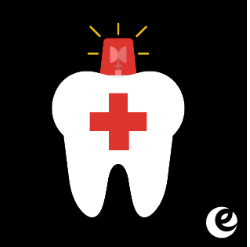What Is a Dental Emergency?

Whenever something goes wrong with your oral health, it can be tempting to hit the panic button. Fortunately, not every dental emergency ends up being urgent. In many cases you can get away with waiting a while before visiting the dentist.
We are ready to support you no matter the situation. Here are a few examples of urgent and non-urgent dental emergencies to help you determine what your care plan should be.
URGENT DENTAL EMERGENCIES
If you are in severe dental pain or have lacerated your gums, cheeks, or tongue, this qualifies as an urgent dental emergency. You’ll need immediate care for the following urgent dental emergencies:
- Severe toothache
- Dental abscess
- Swollen gums
- Loose tooth
- Knocked-out tooth
- Broken tooth or large piece of tooth is missing
- Large crack or chip in tooth that exposes the root
If the dental trauma happens outside of office hours, your first call should still be to our emergency dental office.. The sooner you seek medical treatment, the less likely you’ll need expensive dental restorations in the future.
NON-URGENT DENTAL EMERGENCIES
If you are having a non-urgent dental emergency, you’ll be able to schedule your dentist appointment during normal office hours. This means that if your filling falls out Saturday afternoon, you’ll be able to wait until Monday morning to have a new filling placed. Non-urgent dental emergencies include:
Non-urgent dental emergencies include:
- Lost filling, crown, or bridge
- Dull toothache
- Food lodged between teeth
- Small chip or crack in tooth
Quick thinking is often what saves a tooth from needing an expensive dental restoration or being extracted entirely. If you are experiencing dental pain and discomfort, we encourage you to seek treatment as soon as possible. The sooner you seek emergency dental care, the sooner you can alleviate pain and prevent permanent damage to teeth and gums.
Our dentists can also help you prevent dental emergencies from happening in the first place. For example, sports dental injuries can be avoided with custom mouth guards.
WHAT TO DO IN A DENTAL EMERGENCY
If you’re experiencing a dental emergency, the first thing to do is not to panic. Clear thinking is the key to solving the problem as quickly as possible.
For non-urgent dental emergencies, the most important thing is to manage your discomfort while you wait for an appointment. If there are any sharp edges on a broken tooth, dental wax can be purchased at the nearest drugstore. This wax will help protect the soft tissues of your mouth from any jagged edges.
Tooth pain and swelling can be managed by over-the-counter painkillers and cold compresses on the swollen areas. You might need to eat soft foods until the problem can be addressed.
If a tooth is knocked out, try to gently place it back in its socket. If that doesn’t work, submerge it in a glass of milk and take it to the dentist as soon as possible. In many cases, if the tooth is kept moist and you make it to the dentist within three hours, the tooth can be reattached.